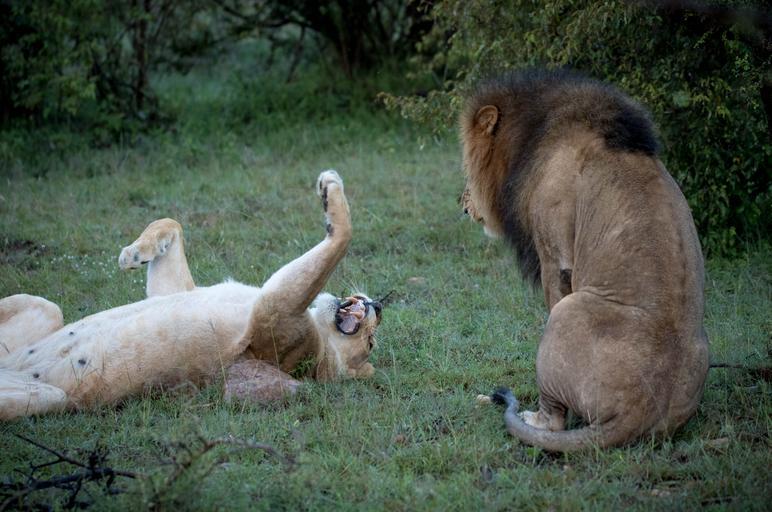MAKE A MEME
View Large Image

| View Original: | 2015_06_13_Ol_Kinyei_Maasai_Mara_JPEG_RESIZED_SELECTION_0044.jpg (5132x3402) | |||
| Download: | Original | Medium | Small | Thumb |
| Courtesy of: | www.flickr.com | More Like This | ||
| Keywords: kenya maasai mara national reserve ol kinyei porini gamewatchers wildlife management nature conservation environment conservancy employment community guide tracker tourism tourists safari holiday outdoor animal KENYA, Ol Kinyei, Maasai Mara: In a photograph taken by Make It Kenya 13 June 2015, a lioness interacts with a male lion in the Ol Kinyei Conservancy in Kenya's Maasai Mara, during a prolonged mating session, which sees them copulate roughly every 15mins during a 48hr period. The management of Ol Kinyei and similar conservancies bordering the Maasai Mara National Reserve and in other areas of Kenya is an alternative approach to wildlife conservation. The land on which the conservancies are located is leased from local communities who directly benefit from its use to naturally host and protect wildlife populations. The privately owned and managed conservancies also offer employment to members of these communities and further opportunity of training in different areas of expertise from guides and trackers to chefs and camp management. Strict regulation of visitor numbers and the construction of camps inside the conservancies also limit the amount of people and vehicles present at any given time, offering tourists a much more personal and exclusive wildlife safari experience while at the same time reducing stress on and the disturbance of wildlife populations, which quickly begin to return and repopulate areas and land transformed under the conservancy model. MANDATORY CREDIT: MAKE IT KENYA PHOTO / STUART PRICE. KENYA, Ol Kinyei, Maasai Mara: In a photograph taken by Make It Kenya 13 June 2015, a lioness interacts with a male lion in the Ol Kinyei Conservancy in Kenya's Maasai Mara, during a prolonged mating session, which sees them copulate roughly every 15mins during a 48hr period. The management of Ol Kinyei and similar conservancies bordering the Maasai Mara National Reserve and in other areas of Kenya is an alternative approach to wildlife conservation. The land on which the conservancies are located is leased from local communities who directly benefit from its use to naturally host and protect wildlife populations. The privately owned and managed conservancies also offer employment to members of these communities and further opportunity of training in different areas of expertise from guides and trackers to chefs and camp management. Strict regulation of visitor numbers and the construction of camps inside the conservancies also limit the amount of people and vehicles present at any given time, offering tourists a much more personal and exclusive wildlife safari experience while at the same time reducing stress on and the disturbance of wildlife populations, which quickly begin to return and repopulate areas and land transformed under the conservancy model. MANDATORY CREDIT: MAKE IT KENYA PHOTO / STUART PRICE. | ||||